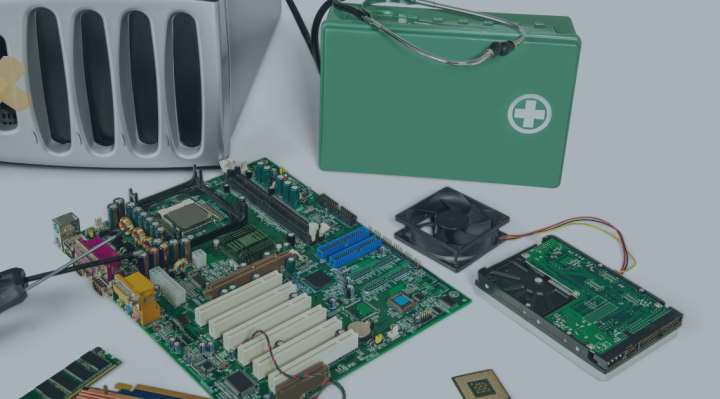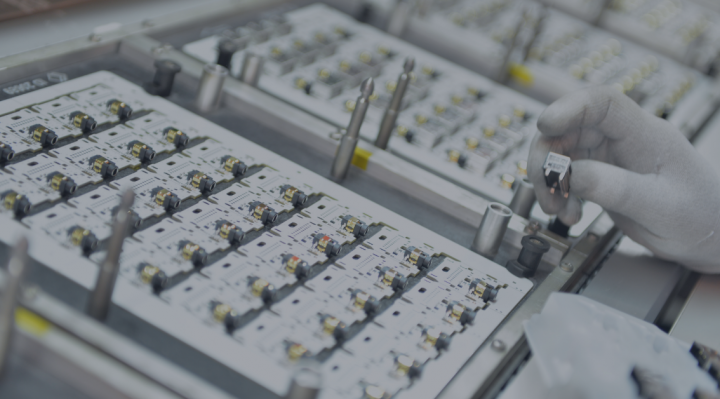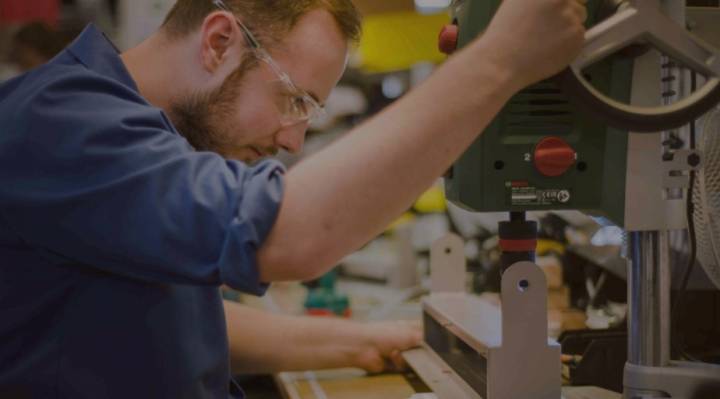What is MRPII?
MRP2 is a fully automated approach in inventory management, vendor scheduling and demand planning, which are the core components in contract electronics manufacturing process. When designing a MRP2 system, modules on cost accounting and capacity requirement planning were added, which were not used in MRP1. This has enabled MRP2 to become a highly efficient system to manage the supply chain in a broader spectrum.
A key tool for a contract electronics manufacturer
For an electronic manufacturer, who assembles different varieties of PCBA’s (printed circuit board assemblies) for different industrial Customers, the component database will usually consist of tens of thousands of electronic components – from resistors, capacitors, IC’s, connectors etc. BOM (Bill of material) of one type of PCBA product will on average consist of up to a few hundred of components per board.
Ordering and managing such database via “Excel-based” systems or even worse – manually, will bring significant risk and has serious consequences, such as ordering much higher values than really required. This will most probably generate higher inventory, and will be incredibly hard to manage when the demand of the Customer changes in time. On the other hand, such manual or “excel-based” system can in consequence lead to ordering smaller quantity of materials than required. This will cause idle time on the production floor, re-planning and most importantly failing to meet customer requirements, such as on-time delivery. Above issues can be minimized by using a well-parametrized MRP2 system, since it allows to manage the Customer demand in line with the agreed parameters, significantly shorten the lead times, optimize the inventory level and maximize service levels by boosting the efficiency.
MRPII Parameters critical in the electronics supply chains
There are different types of projects that include electronic assemblies. Some projects run continuously, some seasonally or from time to time with an unknown demand. All these types of projects will be included in the Master Production Schedule (MPS) and different types of parameters needed to be set when ordering the materials, in order to optimize the inventory levels and remain flexible to changing demand. Parameters such as lead time, MOQ (Minimum Order Quantity), EOQ (Economic Order Quantity), MSQ (Minimum Shipment Quantity) will differ according to each project or material. MRP2 provides the ability of setting parameters of the BOM in and economically justified manner, while still maintaining the flexibility. The BOM is linked directly to the finished product. The possibility of building relations between the planning parameters is endless and as an outcome we can generate a planning model fit individually for each Customer, based on his business model and needs. The MRP2 remains a key tool for a reliable contract electronics manufacturing provider.
When generating the MRP2 loop, it automatically counts the requirement of each material based on the given parameters and capacity, and then generates the requirement with the required date. This provides a significant control on the demand planning, which enables a very reliable supply chain management. Moreover, the reaction to changes in demand requested by the Customer is immediate.
Electronics supply chain characteristics
Main suppliers in the electronics supply chain and PCBA’s are semiconductor manufacturers, metal manufactures, plastic and resin manufactures, laminated plastic manufactures and raw material suppliers such as gold, nickel and copper. Material cost usually generate around 80% of the total cost structure of the PCBA or final product. Primary materials such as gold, nickel and copper are imported from diverse parts of the world, and are subject to influence in prices and exchange rates, as well as availability and lead time. Price volatility is an important concern in the electronics manufacturing industry.
Long lead time (LTT) components in the electronics supply chain
When procuring electronics material for printed circuit board assemblies, certain components can reach extremely extensive lead times, and such components are often referred to as Long Lead Time (LLT) components. These include transistors, capacitors, resistors or more dedicated materials such as IC’s. For such LLT components, the availability can reach around 180 days from order to delivery, or longer. Alternatives (also referred to as substitutions) may sometimes not be available or not acceptable by the product designer, or including alternatives may simply require additional expenses, due to eg. certification requirements of the product, if applicable.
Thus, the skill and the ability to minimize the lead time via adapting efficient and reliable planning solutions is key to supporting However due to its high competition in the market, the manufactures need to provide the order to the customer within a very short lead time. In order to accomplish this goal, handling LLT components is a critical factor in PCBA supply chain.
Challenges: Obsolete components and allocations
In electronic supply chains there are two main challenges.
Obsolete materials that take place due to technological changes
Mainly due to technological changes, certain components can simply disappear from the market within time. The manufacturers implement new versions, replacements that force the designers of the products to change their design or simply accept that the components will become obsolete and their availability will be scarce. This will naturally cause the price on the open market to increase, but other than price – the availability may be the major setback. While changing the design remains an option, such process is also very expensive and requires time, and in such circumstances introduction a new product version may be more reasonable.
There can be a lot of scenarios that the materials in electronic supply chain can be obsessed. Especially due to the very short lead time on order fulfillment electronic (PCBA) manufactures tends to have stocks on longer lead time materials.
In order to overcome this situation, the electronic manufactures together with the Customer need to have implement long term demand forecast, or separate orders for long lead time materials that may be a subject of obsolence. In order to optimize the procurement process, electronic manufactures that use the support of MRP2 system, will ensure that the orders to the vendors are sent only when needed. To prevent the unnecessary inventory, MRP2 provides an optimum solution by considering the safety stocks - additional stocks available for allocations and lead times.
Allocations and availability
Sudden technological changes, as well as general positive global economic growth may cause a situation, where the demand of the product is exceeding its supply. Smart manufacturers and automotive industry are key drivers for rising demand. For instance, the smart technology in 2010, 300 million smart phones were produced worldwide, in 2017 the number rose to 1.5 bn. New smart phone models have a huge number of MLCC and resistors, and the component manufactures were not quick enough to cope with the increasing demand.
Demand is the driver for “allocation”, where components are not widely available in the market, which creates a limitation in access to materials and drives the lead times up.
Summary: Why is MRP2 important for the Customers of Electronics Manufacturing providers?
Transparency, reliability in optimizing orders to suppliers, quick reaction and ability to manage material requirements in reference to the demand is crucial in dealing with tens of thousands of components and BOMs. Furthermore, assuring that all products are delivered on time to the Customer is a critical competence for electronics manufacturing provider delivering printed circuit board assemblies.
By using a world class ERP with a MRP2, such as Microsoft Dynamics AX will enable to implement planning with optimized resource allocations. This can be achieved through efficiently integrating data from different sources, including inventory, open orders, production resources, WIP, as well as the finished goods. Better integrations of all key data will allow for better optimizations. All in line with agreed parameters.
Ability of building a customized business model per Customer based on individual planning parameters and adapting to the needs of each Customer individually is the key benefit by having a world class MRP2 systems for the Clients of the electronics manufacturing services provider.






